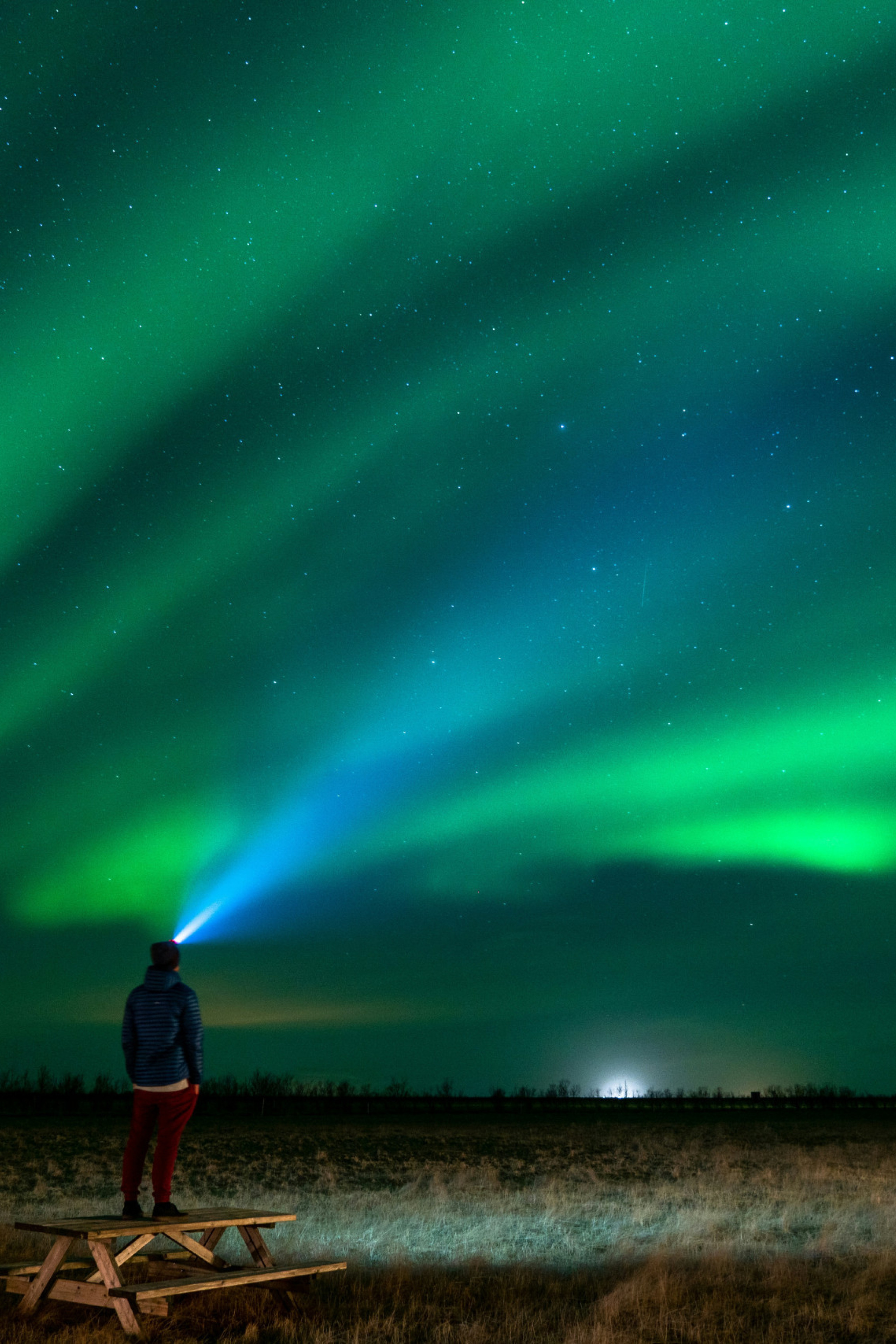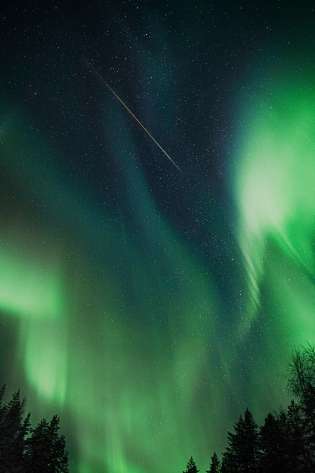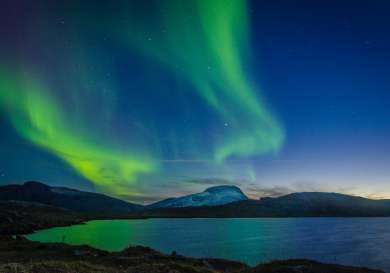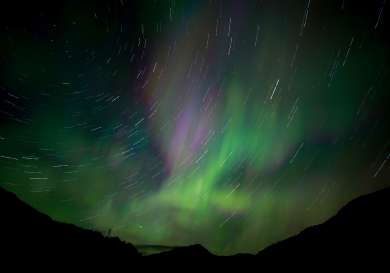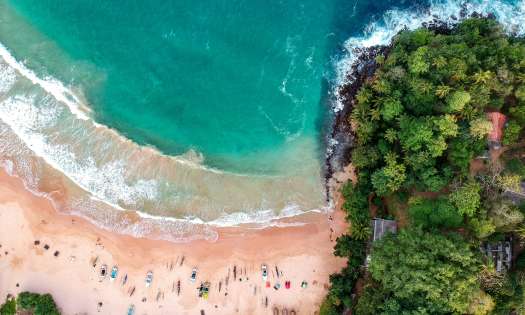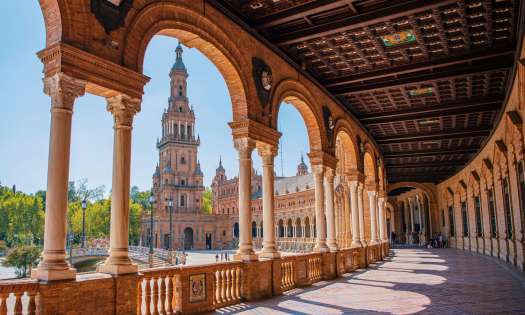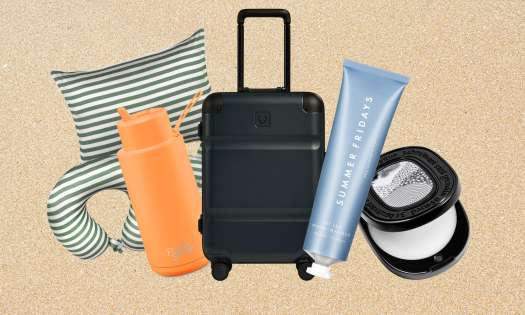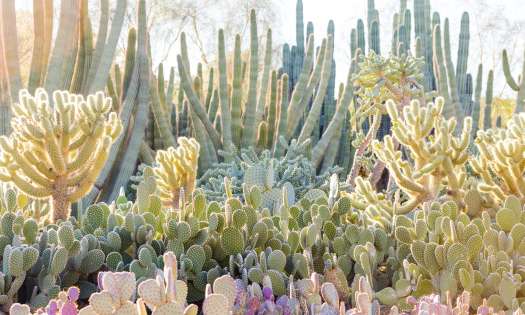What are the Northern Lights?
The Northern Lights, also known by their more scientific name Aurora Borealis, are one of nature’s most stunning visual phenomena. The term “Aurora Borealis” was coined by Galileo Galilei in 1619. He named it after Aurora, the Roman goddess of the dawn, and Boreas, the Greek god of the north wind.
The Northern Lights have fascinated people for centuries. In Norse mythology, they were believed to be reflections from the armor of the Valkyries, guiding fallen warriors to Valhalla. Indigenous Sami tribes in Scandinavia, meanwhile, associated the lights with spirits. The fascination continues today, but now we understand the science behind the magic.
The Science Behind the Northern Lights
The lights occur when charged particles from the sun (thanks to solar winds) interact with Earth’s magnetic field. As these particles hit the atmosphere, they collide with gases like oxygen and nitrogen, causing them to emit light. The result is a dance of vivid colors—greens, pinks, purples, and sometimes reds—that can light up the night sky.
The strength of the Earth's magnetic field affects the visibility and occurrence of the Northern Lights, as it directs solar particles towards the poles.
The colors you see depend on which gases the particles collide with and at what altitude. Oxygen gives off green or red, while nitrogen produces blue or purplish-red hues. It’s all about how much energy is released during the collision. The stronger the solar activity, the more intense and colorful the show.
This natural light display is generally confined to higher latitudes, close to the Earth’s magnetic poles. The most popular places to catch the aurora are in regions near the Arctic Circle, like northern Norway, Iceland, Canada, and parts of Alaska.
Top Destinations for Viewing the Northern Lights
Europe
Iceland: A Prime Location for Viewing the Northern Lights
Iceland is among the best places on Earth to see the Northern Lights. Its location, just below the Arctic Circle and close to the North Pole, enhances the chances of witnessing this natural phenomenon due to the optimal viewing conditions. With vast open spaces and minimal light pollution, Iceland is a prime spot for aurora hunters.
The best time to see the Northern Lights in Iceland is between late September and early April. The nights are long and dark during these months, providing the perfect backdrop for the auroras to shine. The best viewing times are typically between 9 PM and 2 AM, but if the solar activity is strong enough, you might catch them earlier or later.
While the Northern Lights can theoretically be seen from anywhere in Iceland, it’s best to get away from the bright city lights of Reykjavik. Head to remote spots like Thingvellir National Park, the Snæfellsnes Peninsula, or even the Jokulsarlon Glacier Lagoon. These locations offer less light pollution and a stunning natural backdrop that makes the aurora even more breathtaking.
Norway: Tromsø and the Lofoten Islands
Norway is another top spot for Northern Lights, and Tromsø, often called the “Gateway to the Arctic,” is a favorite. Located in the heart of the aurora zone, Tromsø offers some of the most reliable Northern Lights sightings from late September to early April. With its mix of city life and stunning natural surroundings, Tromsø is perfect for aurora hunters who want both convenience and adventure. Popular activities include dog sledding, whale watching, and taking cable car rides up Fjellheisen for panoramic views of the lights.
For something more off the beaten path, head to the Lofoten Islands. The islands' dramatic peaks and coastal views provide a breathtaking backdrop for the Northern Lights. The best months to visit are November through February when the long nights offer prime viewing conditions. You can also enjoy skiing, hiking, or simply exploring the picturesque fishing villages while waiting for the auroras to appear.
Finland: Lapland
Finland’s Lapland region is one of the most magical places to witness the Northern Lights, with sightings possible on around 200 nights a year between late August and April. The town of Rovaniemi, known as the “official” hometown of Santa Claus, offers a blend of holiday charm and top-tier aurora viewing. You can stay in cozy glass igloos or wilderness lodges, where you can watch the lights from the comfort of your bed—no need to freeze outside!
Lapland also offers plenty of activities while waiting for the auroras. Snowshoeing, reindeer safaris, husky sledding, and visiting Santa Claus Village are just a few options. If you’re after a more rugged experience, head deeper into the wilderness, where remote cabins and national parks like Pallas-Yllästunturi provide a quieter, more intimate setting for Northern Lights viewing.
Sweden: Abisko & Kiruna
Sweden’s Arctic region offers some of the most reliable Northern Lights sightings, and Abisko National Park is arguably the best spot. Known for its “Blue Hole,” a patch of sky that tends to stay clear even when surrounding areas are cloudy, Abisko is ideal for those hoping to catch the auroras. The Northern Lights season here runs from late September to early April, with the best chances of seeing them between December and March. Abisko’s Aurora Sky Station is a popular spot for dedicated aurora hunters.
Kiruna, located further east, is another excellent base for Northern Lights chasers. This small town, surrounded by wilderness, offers activities like snowmobiling, ice fishing, and staying at the famous Icehotel in nearby Jukkasjärvi.
North America
Alaska: Fairbanks and Anchorage
Alaska is one of the best places in the U.S. to see the Northern Lights, and Fairbanks is the prime spot. Located under the “aurora oval,” Fairbanks offers frequent and vivid aurora displays from late August to April. The town even has a dedicated Aurora Ice Museum and offers activities like dog sledding and soaking in the Chena Hot Springs while waiting for the lights to appear.
Anchorage, while more urban, is another solid option. You can easily escape the city’s light pollution with just a short drive, and the nearby wilderness areas like Eagle River and Glen Alps provide stunning views.
Canada: Yellowknife and Whitehorse
Canada’s Northwest Territories and Yukon are top spots for Northern Lights chasers. Northern Canada, particularly the regions within the auroral oval, is a prime destination for viewing this natural phenomenon, especially during periods of high solar activity. Yellowknife, located in the heart of the aurora zone, boasts over 200 clear nights a year, making it one of the best places on the planet for aurora viewing. The best time to visit is between mid-August and April. During the day, explore the town’s local Indigenous culture or try ice fishing and snowmobiling.
Whitehorse, the capital of the Yukon, also offers excellent Northern Lights sightings, with the peak season running from late August to mid-April. You can enjoy winter activities like cross-country skiing or take a dip in the Takhini Hot Springs as you wait for the auroras to light up the sky.
Northern Lights in the Southern Hemisphere
Australia: Tasmania
While the Northern Hemisphere has the Aurora Borealis, the Southern Hemisphere has its own version: the Aurora Australis, or Southern Lights. Tasmania is one of the few places in Australia where you can catch this stunning light show. The best time to see the Southern Lights in Tasmania is between March and September, with the darkest months offering the best viewing conditions.
Head to remote spots like the south coast, Mount Wellington near Hobart, or South Arm Peninsula for the clearest skies and the least light pollution. While waiting for the auroras, Tasmania’s rugged beauty offers plenty of activities like hiking, stargazing, and exploring national parks.
New Zealand: Dunedin
New Zealand’s South Island, especially around Dunedin, is another excellent location to spot the Southern Lights. The prime viewing season runs from March to September, with the best chances on clear, crisp winter nights. Dunedin’s Otago Peninsula, Tunnel Beach, and Hoopers Inlet are popular spots to catch the lights.
While you're there, take advantage of Dunedin’s natural beauty and wildlife. You can explore its scenic coastline, visit the Royal Albatross Centre, or hike through lush, rolling hills during the day before settling in for a night of aurora-watching.
Best Time to See the Northern Lights
Catching the Northern Lights isn’t just about picking the right place—it’s about timing. While the auroras can be unpredictable, there are certain times and conditions that increase your chances of witnessing this phenomenon.
Peak Season for Viewing the Northern Lights
The peak season for Northern Lights sightings generally runs from late September to early April in the Northern Hemisphere. During this time, the long, dark nights and clearer skies provide the best conditions for aurora hunting. While the lights are technically active year-round, the brighter summer months make them harder to see. For those chasing the Southern Lights, March to September is your window of opportunity.
Best Months to See the Northern Lights
For 2025, the Northern Lights are expected to be particularly strong due to increased solar activity, making it an excellent year for aurora chasers. The best months to visit are typically November through February, when nights are the longest, especially around the new moon phases, when the sky is darkest. Late September and early April can also offer great conditions, with milder weather and still, long nights.
Northern Lights March
March is one of the best months of the year to see the Northern Lights, thanks to a near-perfect combination of dark skies, increased solar activity, and seasonal conditions. The spring equinox, which falls around 20 March, often triggers stronger geomagnetic activity, making auroras more frequent and intense.
Nights are still long enough for solid viewing windows, especially between 9 PM and 3 AM when the sky is at its darkest. At the same time, the weather starts to improve in many Arctic regions, with clearer skies and better travel conditions than earlier in the winter.
Scandinavian destinations like Norway, Sweden, and Iceland are particularly well-positioned in March, offering high chances of sightings with slightly more comfort and accessibility. If you're planning a trip in 2026, March hits that sweet spot between aurora intensity and overall travel experience.
Northern Lights September 2025
September marks the official start of the aurora season. As the long daylight hours of summer begin to fade, darkness returns to the Arctic skies, bringing with it the first real opportunities to catch the Northern Lights after the summer break.
One of the biggest boosts comes from the autumnal equinox, which falls around 22 September. This period is known for elevated geomagnetic activity, meaning stronger, more frequent aurora displays. And unlike the deep winter months, September still offers milder weather, making it a great time for travellers who want the aurora experience without the sub-zero chill.
Regions like Iceland, northern Norway, and Canada’s Yukon are particularly well-positioned in September. The nights are long enough for solid viewing windows, and the skies tend to be relatively clear, especially in areas known for stable autumn conditions.
If you're planning a Northern Lights trip in 2025 and prefer fewer crowds, better weather, and strong aurora potential, September is a smart and underrated choice.
Minimizing Light Pollution for Better Views
Light pollution is your enemy when it comes to seeing the Northern Lights. The farther you get from cities and streetlights, the better your chances of witnessing the full brilliance of the auroras. National parks, remote villages, and uninhabited areas are ideal. Even if you’re staying in a town, a short drive into the wilderness can dramatically improve your view.
Best Time of Day to View the Northern Lights
The best time to catch the northern lights dance is typically between 9 PM and 2 AM, although the lights can appear earlier or later, depending on solar activity. Clear skies are crucial, so always keep an eye on weather conditions, and use aurora forecasting apps to track solar activity and cloud coverage.
Patience and Persistence
Even with all the right conditions, the Northern Lights are still a natural phenomenon—unpredictable and often elusive. Seeing them requires patience and persistence. It’s best to plan for several nights of aurora hunting to maximize your chances. If you're in a top location for the lights, there's always plenty of other adventures to keep you entertained while you wait.
Planning Your Northern Lights Trip
Planning a Northern Lights trip requires more than just packing warm clothes and hoping for clear skies. From choosing the right tour to booking the perfect accommodation, careful planning can greatly increase your chances of catching the auroras while also ensuring you make the most of your adventure.
Booking a Northern Lights Tour
While it’s possible to go aurora hunting on your own, booking a Northern Lights tour can take the guesswork out of the experience. Many destinations offer specialized tours led by expert guides who know the best spots for viewing, as well as the latest aurora and weather forecasts. These tours often include transportation, so you don’t have to worry about navigating unfamiliar roads at night or finding the darkest skies.
Popular destinations like Tromsø, Iceland, and Yellowknife offer a wide range of Northern Lights tours, from simple bus or van tours to more immersive experiences like snowmobile safaris, dog sledding adventures, or even cruises that take you to remote locations by water. Some tours provide photography tips, helping you capture the perfect aurora shot, and others include extras like hot chocolate or a campfire experience to keep you warm while you wait for the lights to appear.
If you’re looking for something more personalized, consider private tours that cater to smaller groups or one-on-one experiences with a guide. This way, you can avoid the crowds and enjoy a more intimate setting, with the added flexibility to adjust plans based on real-time conditions.
Accommodation Options for Viewing the Northern Lights
Where you stay can make a huge difference in your Northern Lights experience. In many destinations, you can find accommodations designed specifically for aurora viewing, offering clear, dark skies right outside your door.
For the ultimate experience, look for hotels, lodges, or cabins with large windows, glass domes, or even glass igloos that let you watch the auroras from the warmth and comfort of your bed. Finland is famous for these kinds of accommodations, with options like the Kakslauttanen Arctic Resort, where you can sleep in a glass igloo under the stars. Other popular spots include Iceland’s Buubble Hotel and Sweden’s Aurora Safari Camp.
Remote wilderness lodges are another great option for those who want to escape light pollution entirely. These lodges are often located far from towns and cities, giving you uninterrupted views of the night sky.
If you’re on a budget or prefer a more independent trip, there are also plenty of cozy cabins, cottages, and Airbnb options near Northern Lights hotspots. Just make sure to choose a location that’s far from city lights and has good access to open skies.
Capturing the Moment: Photography Tips
Seeing the Northern Lights is an unforgettable experience, but capturing them on camera can be tricky. With the right techniques and a bit of preparation, though, you can snap photos that do justice to this natural wonder.
Best Camera Settings for Capturing the Aurora Borealis
To photograph the Northern Lights, you’ll need to move beyond your camera’s automatic settings. Here are the key settings you’ll want to adjust:
ISO: Start with an ISO setting between 800 and 3200. A higher ISO increases the camera’s sensitivity to light, which is essential for capturing the auroras, but keep it as low as possible to avoid graininess.
Aperture: Use a wide aperture (the lowest f-stop number your lens allows, ideally between f/1.4 and f/2.8). This will let in as much light as possible.
Shutter Speed: A good starting point is a shutter speed of around 5 to 15 seconds. If the auroras are moving quickly, use a shorter exposure (5–8 seconds) to avoid blurring the lights. For slower, more stationary lights, you can extend the shutter speed up to 15 seconds or more.
Focus: Manually focus your lens to infinity. Autofocus struggles in dark conditions, so you’ll need to adjust it manually. One trick is to focus on a distant light or star.
White Balance: Set your white balance to daylight or auto. While you can adjust the colors later in post-processing, these settings should give you accurate colors right out of the camera.
RAW format: Always shoot in RAW format. This gives you more flexibility to adjust the image in post-production, especially with the colors and exposure.
How to Take Photos of the Northern Lights
Once your camera is set up, follow these tips for capturing the best Northern Lights shots:
Use a Tripod: A steady shot is critical for long exposure photography. A good tripod will keep your camera stable and avoid blurry images.
Remote Shutter or Timer: To minimize camera shake, use a remote shutter release or set a 2- to 5-second timer. This ensures that pressing the shutter button doesn’t cause any movement.
Framing the Shot: The Northern Lights are spectacular on their own, but incorporating some foreground elements—like mountains, trees, or a frozen lake—adds depth and context to your photo. Make sure your foreground is visible, either from moonlight or other sources of ambient light.
Test Shots: Before the auroras start to shine, take some test shots to dial in your settings. This way, you won’t waste any time fiddling with your camera once the lights appear.
Aurora Borealis Forecast 2025
If you're planning to chase the Northern Lights in 2025, keeping an eye on the forecast is just as important as choosing the right destination. Auroras are unpredictable by nature, but with the right tools, you can track geomagnetic activity and maximize your chances of seeing them.
Some of the most reliable real-time aurora trackers include:
Space Weather Live – Offers live aurora data, solar wind stats, and short-term KP index predictions.
NOAA’s Aurora Dashboard – Provides North American and global aurora forecasts up to 30 minutes ahead.
University of Alaska’s Aurora Forecast – One of the most accurate sources for North American regions, with clear maps and 3-day predictions.
If you’re on the move, downloading a user-friendly app can make aurora hunting easier:
My Aurora Forecast & Alerts – This app offers customizable alerts based on your location, real-time KP index updates, and even cloud cover tracking. It’s ideal for travellers who want to be notified the moment conditions are looking good.
These tools are especially useful during the solar maximum expected in 2025, when auroral activity is higher than usual. So whether you're planning months in advance or standing under the night sky wondering if you should wait it out, these forecasts take the guesswork out of the experience.
